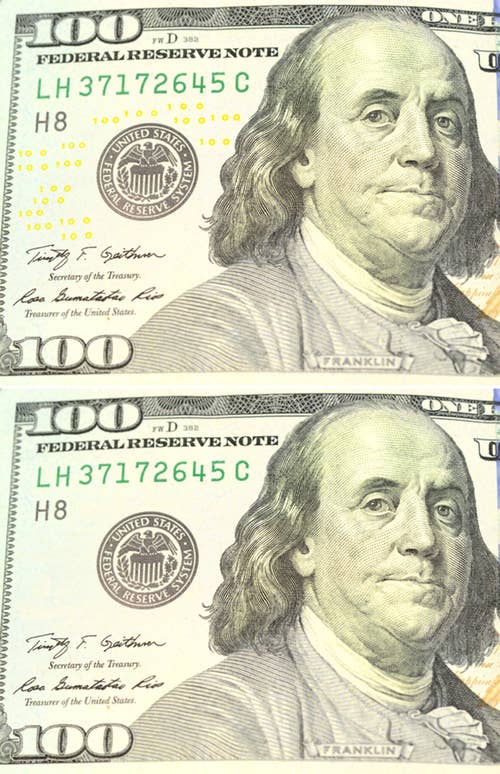This course is designed to help you learn how to use the security features in U.S. currency. The more you know, the less likely you are to accept counterfeit notes.
This training course takes approximately 20 minutes to complete and covers two content areas:
- Overview
- Security features and authentication
Following the course, you will have the opportunity to test your knowledge with a final exam.
For security purposes, all notes have the word 'specimen' printed on them.
Short on time? You can download the PDF version here:
Buy Real Counterfeit Money
Buy Counterfeit Money Online. All country bills is a one-stop solution where you can counterfeit money online, too at a cost-effective price. Buy fake money online, and get the supreme quality of counterfeit banknotes. With us, you will get authentic-looking banknotes that are just a replica of the original one. How you can Detect Counterfeit Money - In 7 Steps. Now, let’s see how to detect a fake vs real bill. Here is an easy mnemonic: there are seven US bills ($1, $2, $5, $10, $20, $50, $100) and seven steps to authenticate them.
When you leave the site, your progress through the course will not be saved and your personal information will not be collected or stored. For more information, see our Privacy Policy.

Many businesses everyday lose money due to counterfeit cash. Counterfeiters constantly develop more sophisticated techniques in order to fool business owners and shop assistants. So how can you tell if money is counterfeit?
Notes may feel or look very genuine, but you may not be able to tell if money is fake with just a glance. Do not be embarrassed to check suspect notes in front of customers. It is in everyone’s interest that these notes are taken out of circulation. The notes should be thoroughly checked if they are suspicious.
There are a number of techniques that can be used to tell if money is counterfeit. People handle money everyday on a regular basis. We may not be aware of it, but our touch senses are often able to differentiate between real and counterfeit money. Real notes have minute fibers embedded in the paper; counterfeiters try and replicate this, but the fibers may not be embedded.
The paper of a counterfeit bill will also feel different than that of genuine bank notes. It may be more limp than the special paper that real notes are printed on. Another age-old way to tell if a bill is fake is to hold it up to a light. Watermarks and a thread running through the note should be visible when held to the light. Counterfeiters will try and replicate these, but the detail will typically not be as fine as the original.
A further way that will help you tell if money is counterfeit is the print quality of the note. Real bank notes have a crisp touch, even if they are old. The definition of the print will be very clear, with fine details. Fakes will not have such great detail; some parts of the note may appear blurred, and other parts may be missing altogether.
Serial numbers are another good way to spot counterfeit money. Genuine serial numbers are printed with the same distinctive color as the treasury seals. The numbers should be spaced precisely and have their own distinct styling. With counterfeit notes, the seal numbers may be a different color and the numbers may not be as even.
There are also many methods that genuine note printers use to foil counterfeiters. Holograms and foils are used more and more in bank notes. These types of bank note processes are very difficult to replicate. There are also ultraviolet machines available that can tell whether money is fake. These omit certain features shown in daylight and show other features not normally seen.
Tell Counterfeit Money From Real Quiz Free
There are also detector pens that can be swiped across notes to tell if they are fake. They turn the swiped area of the note a certain color on genuine notes and another color on counterfeit ones. If you are passed a counterfeit note, do not give it back to the customer; delay the customer and inform the appropriate authorities immediately.